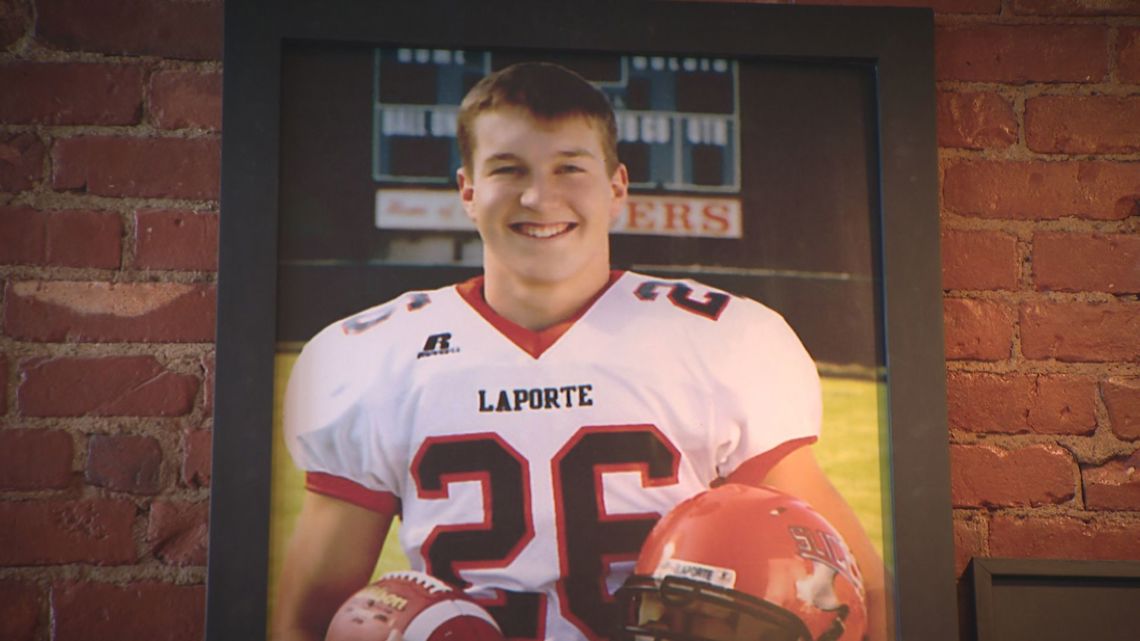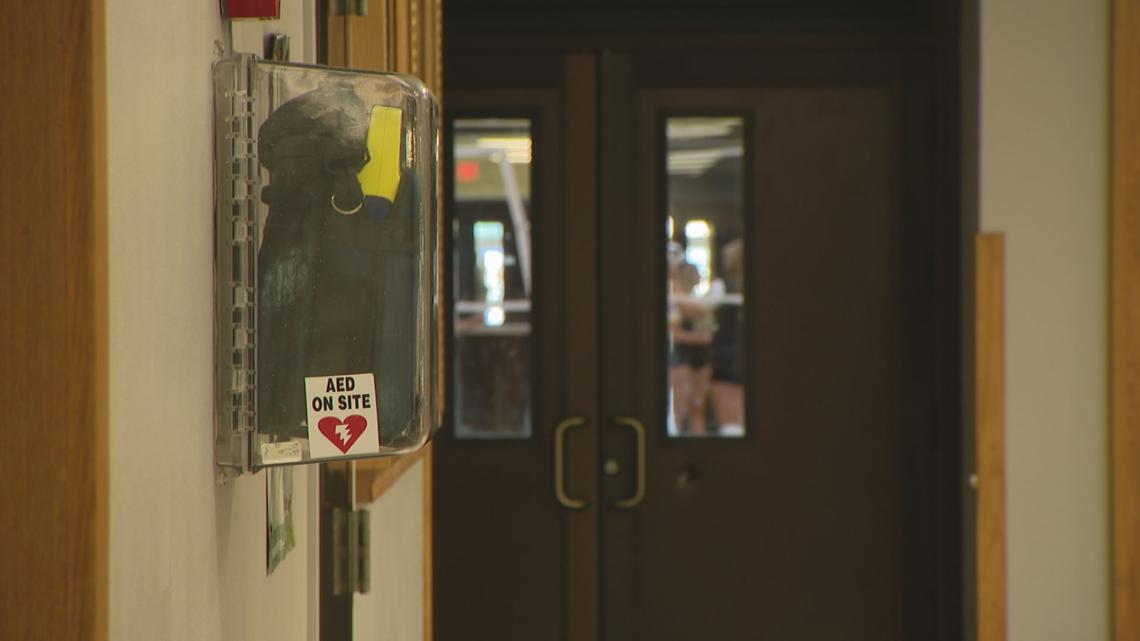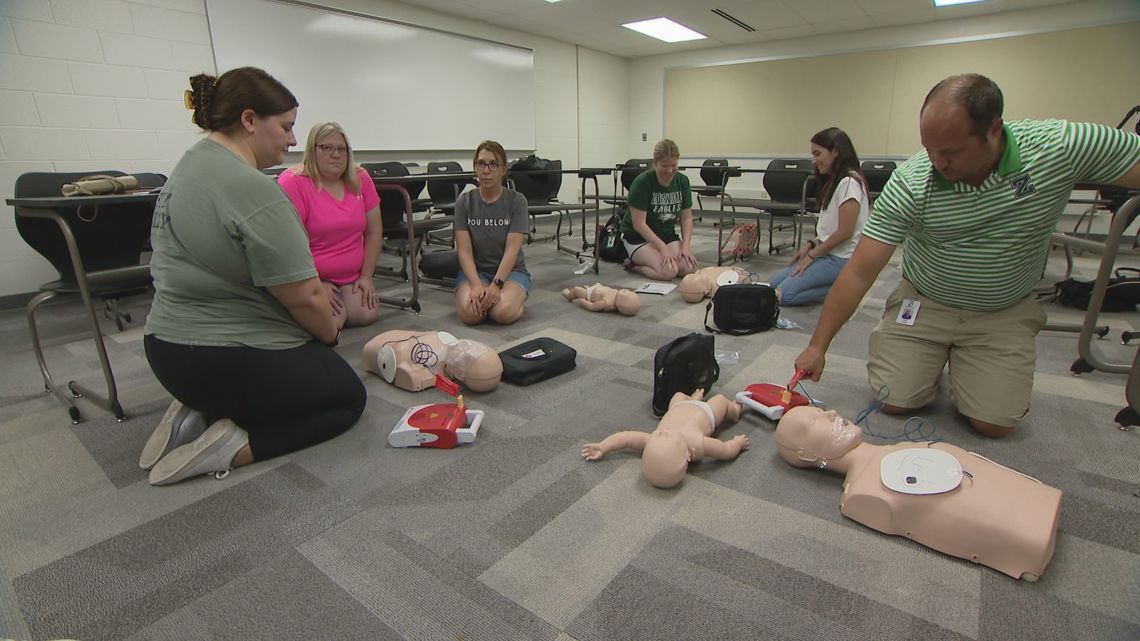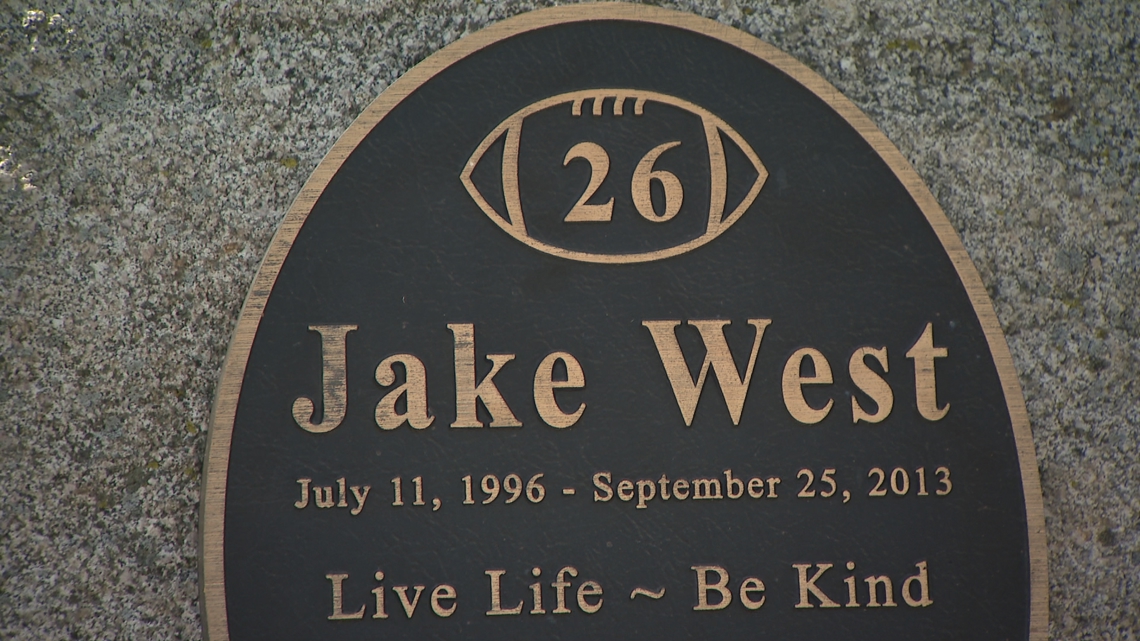INDIANAPOLIS — Indiana does not require automated external defibrillators (AEDs) in schools and on athletic fields.
That may surprise many parents.
Lawmakers considered and rejected that mandate in 2023. Instead, they directed the Indiana Department of Education to study the issue and determine how many AEDs are in schools and if schools are prepared to use them.
13 Investigates reviewed the state’s 2023 AED report and found the state failed to answer those questions. That lack of information has safety experts and advocates across the state concerned.
"It's not good enough,” said Julie West, mother of Jake West, the boy for whom the 2023 law was named.
The seemingly healthy 17-year-old collapsed at football practice in September 2013. The family later learned he died of sudden cardiac arrest.


To protect other children, Julie founded the Play for Jake Foundation. The Indiana mom now advocates for more cardiac-related education and has lobbied lawmakers to pass new legislation making schools and communities safer.
The originally proposed version of Jake’s Law mandated AEDs and required schools to have one within three minutes of specific types of events, activities where sudden cardiac arrest was more likely.
The three-minute goal is recommended by the National Athletic Trainers’ Association. Research shows the faster an AED is applied, the more likely it can help prevent death. It’s also why the group recommends site-specific emergency action plans.


Julie was not happy when lawmakers watered down the bill, but she trusted the law would ensure the state would properly study the child safety issue.
The grieving mother was shocked to read Indiana’s report.
The report states, “As outlined by SEA 369, participation was voluntary. During the survey window, 1,243 of Indiana’s 2,304 public, charter, and accredited non-public schools participated, yielding a 54% response rate.”
Meaning the results were incomplete and did not provide a full picture of the number of AEDs in schools. Also, the report indicates only if a school reported having an AED policy, but did not analyze the types of policies in schools.
“I think it's just a really weak survey,” West said. “If you have a policy in place, what is it? Do you actually have a plan that when someone goes into sudden cardiac arrest, that you have a plan to save that life?”
State Sen. Linda Rogers (R-Granger) is the author of Jake’s Law. She too was disappointed with the quality of the state’s report. She told 13 Investigates the fact only about half of schools responded is a concern.
“To me, this one was important, because this saves kids’ lives,” she said.
13 Investigates contacted the Department of Education to talk about the report and how it was conducted. The agency declined an on-camera interview.


13 Investigates sent out our own survey. Instead of contacting individual schools like the state did, 13News reached out to 125 central Indiana public districts. During follow up emails and calls, we made it clear both the names of districts that responded and those that did not would be disclosed.
Nearly 85%, or 106 districts replied and reported having AEDs in every school. More than 90 districts reported having AEDs at every practice, game or other event on campus. Some districts volunteered that they even have units that are taken to away games or that travel with school safety officers.
Most of the districts told 13News they have an AED policy or plan addressing AED use. Several districts shared a copy for 13 Investigates to review.
The policies and plans differed greatly. Some simply directed the superintendent to develop guidelines to place and maintain devices. Nearly 10 districts, including Monroe-Gregg, Greencastle and Martinsville, shared policies that required periodic drills and set a goal to respond to a sudden cardiac arrest within three minutes.


Many of the emergency action plans 13 Investigates reviewed were very detailed or site-specific. Those plans often provided step-by-step instructions assigning a point person to oversee the patient or direct others to retrieve the AED or call 911. Some plans detailed site-specific instructions to help emergency crews go to the right door or gate. Experts say that kind of detail can be crucial to making sure a person suffering an emergency gets medical help as soon as possible.
About a dozen districts told 13 Investigates one of its AEDs had been used on a student. Nearly two dozen districts reported the device was deployed to help an adult. Some districts reported using an AED device more than once.
Groups like Project ADAM Indiana help schools develop those plans as well as train and educate school personnel to spot and to respond to sudden cardiac arrest. Dr. Adam Kean with Riley Hospital for Children at IU Health runs the affiliate program. The pediatric cardiologist says sudden cardiac arrest is rare. However, sudden cardiac arrest is still the leading cause of death in student athletes, according to research from the National Center for Catastrophic Sport Injury Research at the University of North Carolina at Chapel Hill.


Currently, Riley's Project ADAM has designated 36 Indiana schools as "Heart Safe." That designation means the school has AEDs and is participating in extra education, training, and drills to make sure it is prepared to respond if a student, staff member or visitor experiences sudden cardiac arrest. New Prairie United School Corporation is the first school district to become Heart Safe, and Cathedral High School is the only Heart Safe school in Indianapolis, according to the hospital.
Because of the risk of sudden cardiac arrest, Rogers said she plans to try again to get an AED mandate. She told 13 Investigates she plans to file a bill in the upcoming legislative session.
"I understand no one wants to be over-regulated,” she said, “but when it comes to health and safety, that's number one."
High school volleyball coach Laneia Strasser supports a push for emergency preparedness drills. She invited 13 Investigates to attend a practice at Rochester High School and had her players demonstrate how they practice each year the proper response to a medical emergency.


Athletic trainer Christina Hughes said every team completes a similar drill.
"We spend about 15 minutes at the beginning of every season," Hughes said.
The drills are personal for Strasser. Her son, Drew, collapsed during an early morning tennis practice at the same high school back in 2022. Drew’s coach and teammates sprang into action and quickly applied an AED to his chest.
"If he hadn't had the AED put on him, he wouldn't have survived," Strasser said.
Strasser knows the outcome may have been different if it wasn’t for a twist of fate. The day Drew collapsed, the tennis team was practicing inside near the AED. The machine would not have been so close if they had practiced outside as planned.
“I'm fortunate to live in a great community who provided some grant money and provided the support to get (AEDs) into our schools and to have enough to cover all of our facilities,” Hughes said.
Jake’s Law now allows schools to use funds from the Secured School Safety Grant to pay for AEDs. Schools that apply must develop a venue specific emergency action plan to get funding. Zionsville and Greensburg Community Schools told 13 Investigates they received AED funding through that grant.


West said the extra money and time spent is worth it if it means another family is spared the pain she now lives with.
“All that talk is not enough,” she said. “We need to see the action. We need to make sure that these kids are protected every day when they go to school."
When Jake died, there was an AED in the coach’s office, but not close to the field where he collapsed.
"Not judging or blaming anyone,” West said. “They didn't know any better, but … we do know now.”

